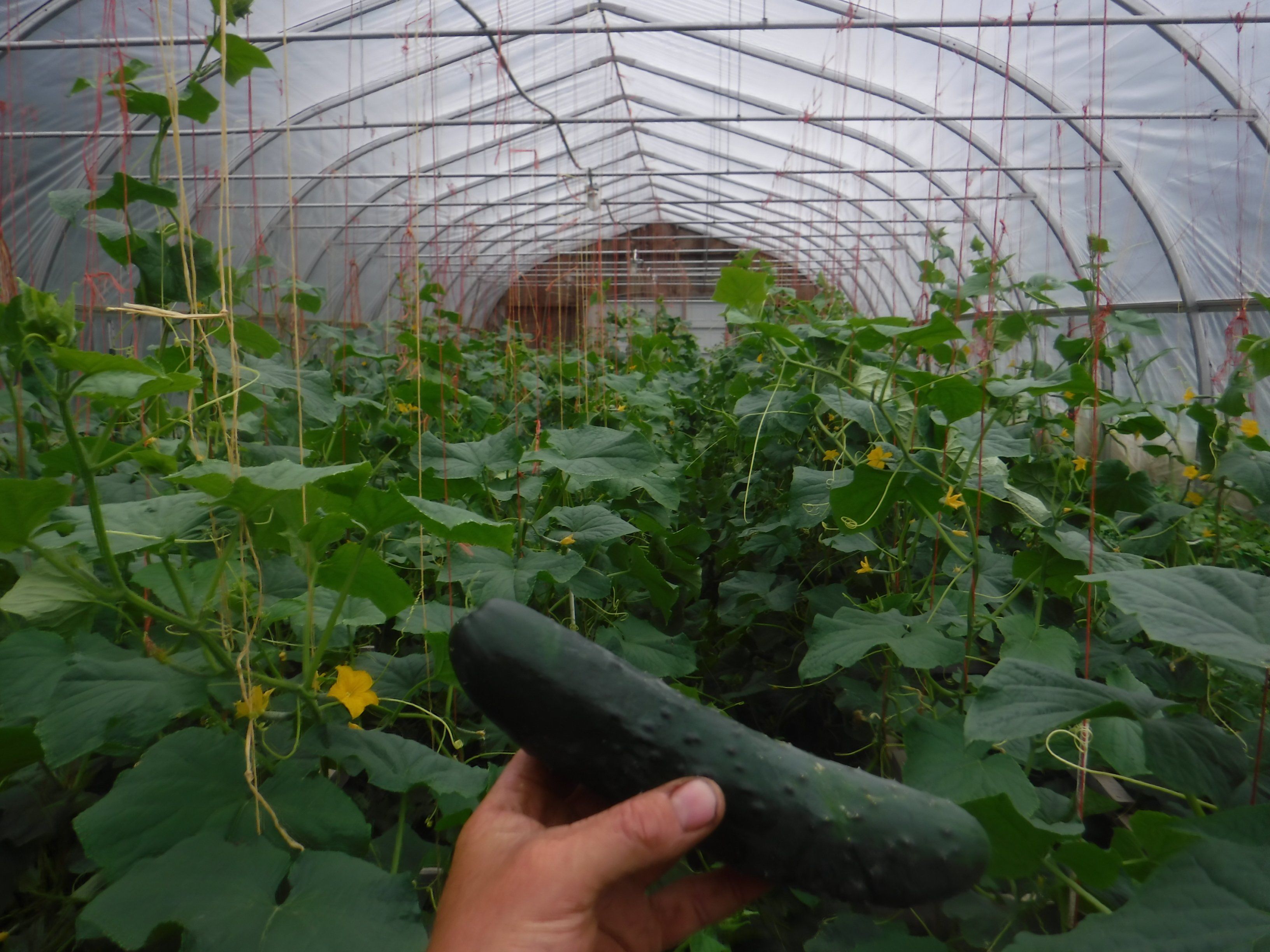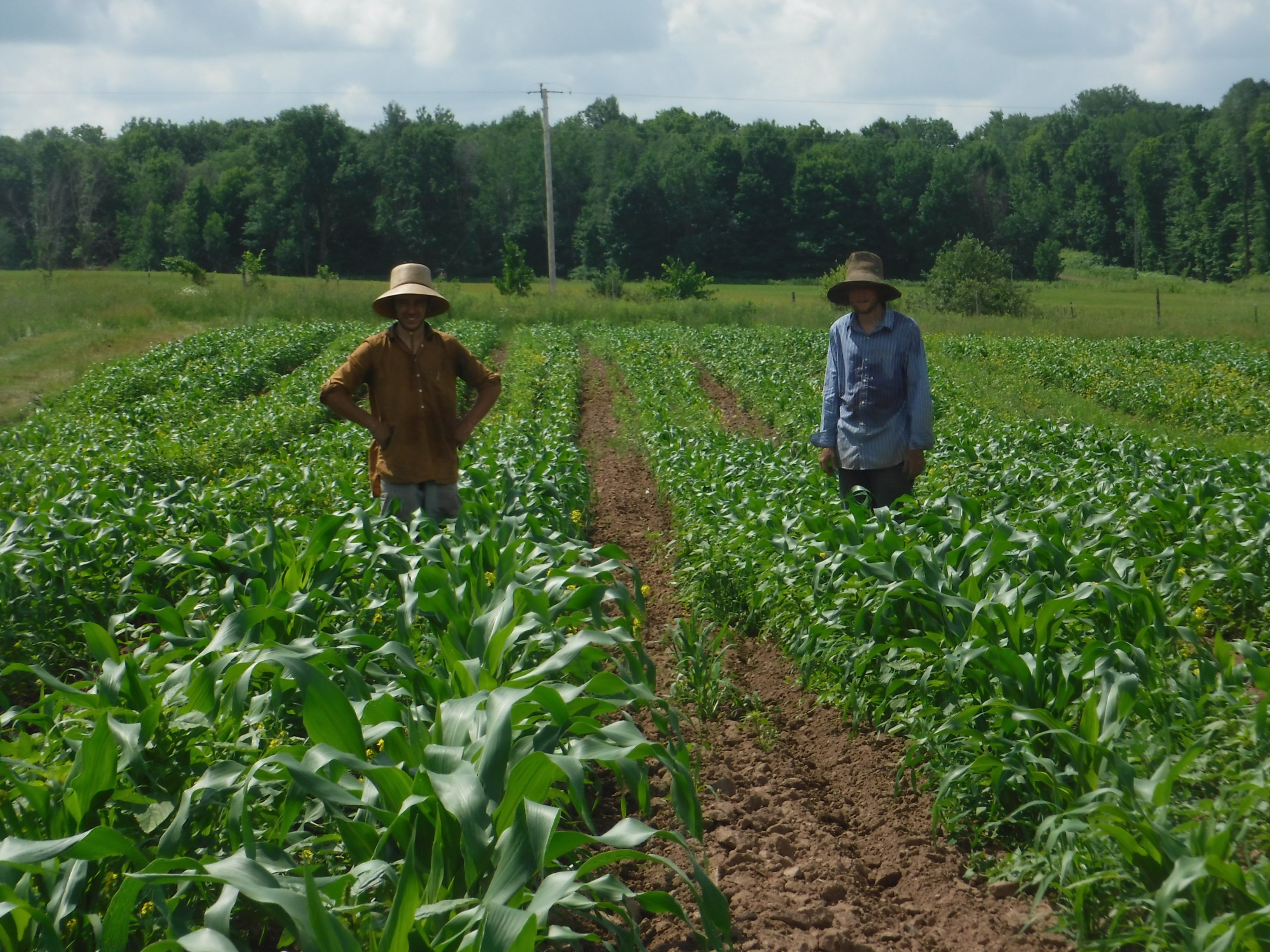Welcome to CSA week 5! (Week 5 already??) The logistics this week are pretty short:
1. The Plus add on this week will be homeground, homegrown pancake mix from Maple Hill Farm (so it might be time to add in some maple syrup to your box if you need any!)
2. Please remember to break down your boxes when you return them to your pickup site so they are easy to manage. We're grateful for our site hosts, so lets do what we can to make their life a little easier.
Here on the farm, June is get up and WORK month. The days are long, but the to-do list is even longer. This year, we've had to add "move irrigation" to the list a lot more often than usual. Most veggie crops require about an inch of water (rain) per week, and we've had less than an inch for the whole month of June! Most crops require extra moisture at key points in their growth cycle, like germination and at flowering. The beans we planted last week (above) were seeded into soil that was so dusty-dry, I was worried that they might not germinate on time. We plant a few beds of beans every week to keep the green beans coming all summer long, and if these ones didn't germinate on time there might be a gap later this summer (in about 60 days) that beans would be in short supply. I was scheming on how to lay out more hose so we could get some water to them if needed, but to my amazement, they still germinated right on time. Ever since the big rains a few years ago, we've started rolling down the beds after we seed them to help firm up the soil so it doesn't wash away in a downpour. As it turns out, rolling seedbeds is good for dry times too, as it helps promote good seed-to-soil contact which promotes nice, uniform germination.
Another trick we've been using to help germination is to cover the seeds with row cover to help keep the wind and sun off the soil and preserve soil moisture. We've been irrigating our newly seeded beds of fall carrots all week to get much needed water on this important crop. Yesterday, we removed the covers, flame weeded the beds before the carrots emerge, and pulled the covers back over after we were finished. Here you can see farmers Eric and Ryan walking down some of the beds with the backpack flamers cooking all those tiny weeds that germinated before the carrots did. And we got the flaming done right on time - we aim to flame weed carrots 6 days after planting. I bet by Saturday morning those rows will be filled with nice clean rows of teeny tiny carrot seedlings.
Speaking of carrots, our spring carrot planting (seeded way back on the first week of March) in the small hoophouse was finally ready for harvest this week. Last week, the carrots in your veggie boxes were from Wild Hollow's hoophouse, and for the next 2 weeks or so these early carrots from our hoophouse will be available as options for your veggie boxes. Locally grown carrots are so incredibly different than those bitter California carrots you find at the grocery store. Those carrots are grown to be long and straight and hard, so they hold up to fast mechanical harvesting and processing. Our carrots however are planted for great taste! If you are not a big carrot fan, I'd be curious to hear what you think of these carrots. If you are a big carrot fan, well, you're in for a treat!
The first planting of field carrots will likely be ready sometime around late July, so as you can see (and taste!) the benefits of growing in hoophouses in our cool climate are many. We've been planning to add a third large (30' wide by 96' long) hoophouse to the farm since last winter, and just this week we finally signed the loan papers at the Farm Service Agency (FSA). With a price tag of about $15K, large hoophouses are not cheap (that's a loooooot of cucumbers...!) but having that protected space to grow in for producing early crops in the spring and spinach through the winter is so important in a region like ours. It should arrive sometime next month, and we will add "hoophouse construction" to our to-do list as well!
Meanwhile, we've been hoeing the onions and are nearly halfway through. They are looking fantastic, and I expect a bumper crop of nice big onions this fall to get us through winter. Once we finish hoeing these onions (about a full day left to hoe them now) we'll hop back on the cultivating tractors for a day or 2 to clean up the weeds again in the field crops like green beans, sweet corn, winter squash, and brassicas (broccoli, cauliflower, cabbage). Somehow, even when it doesn't rain, those weeds seem to find a way to keep on growing!
That's it for this week - have a great weekend, and keep your fingers crossed for some rain.
Yours in community,
Chris Duke
Farmer, Great Oak Farm







